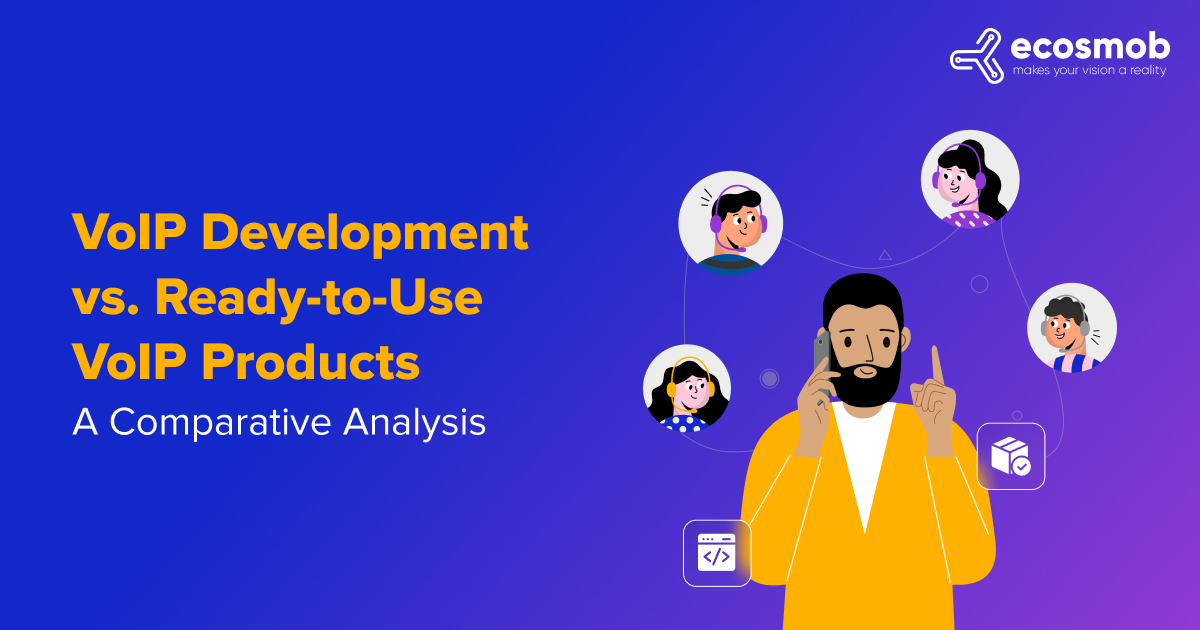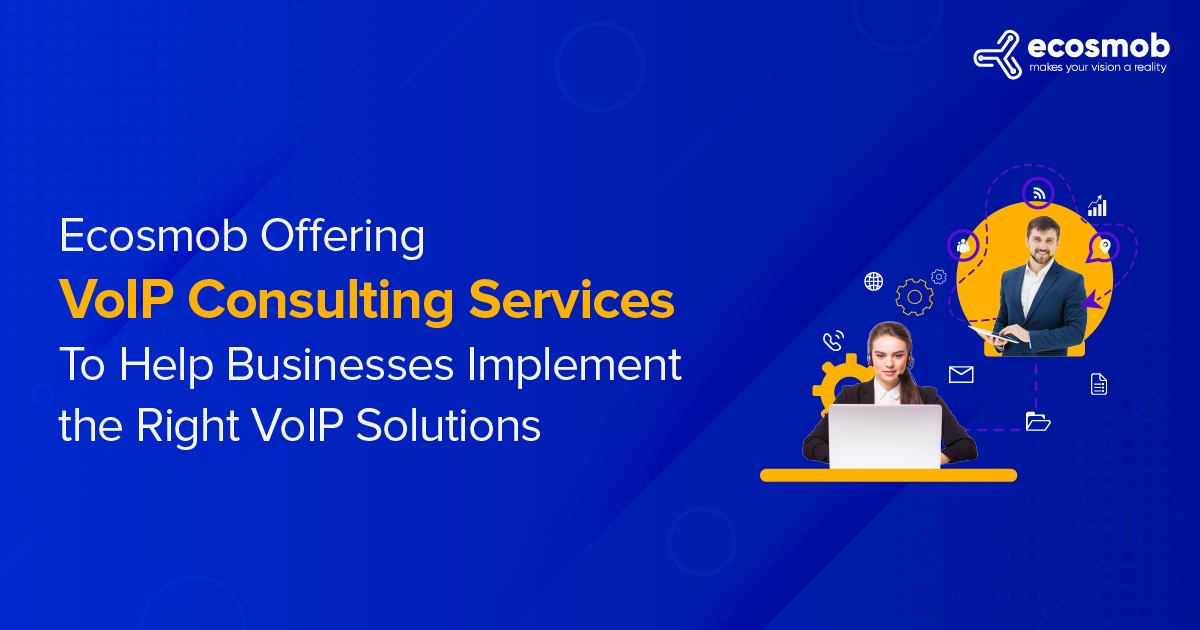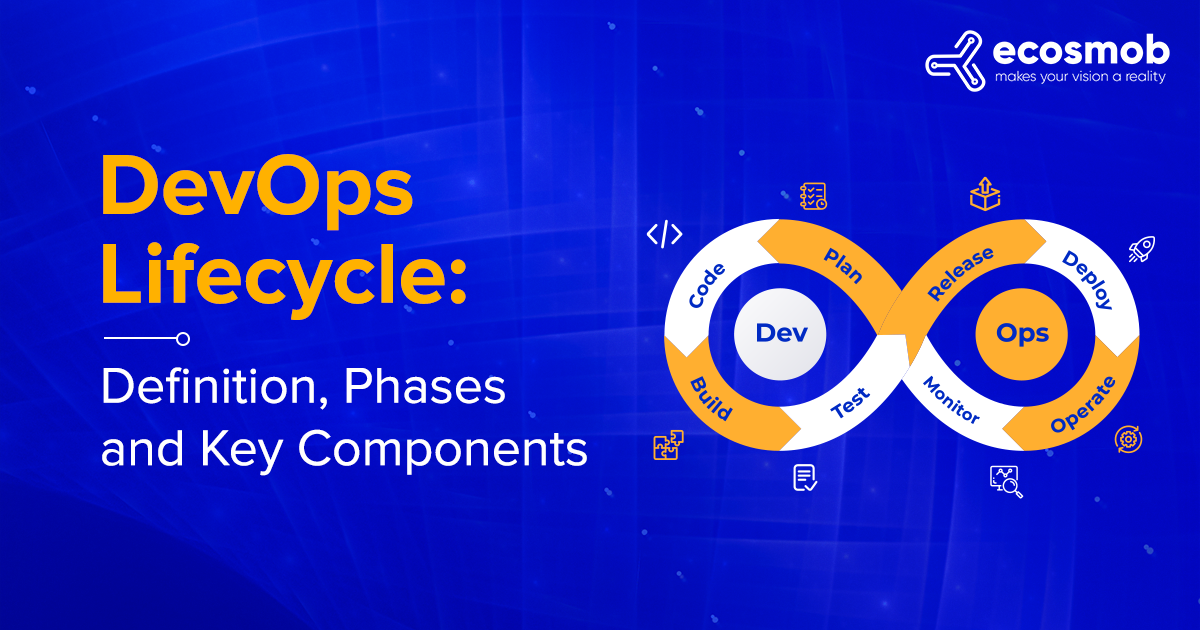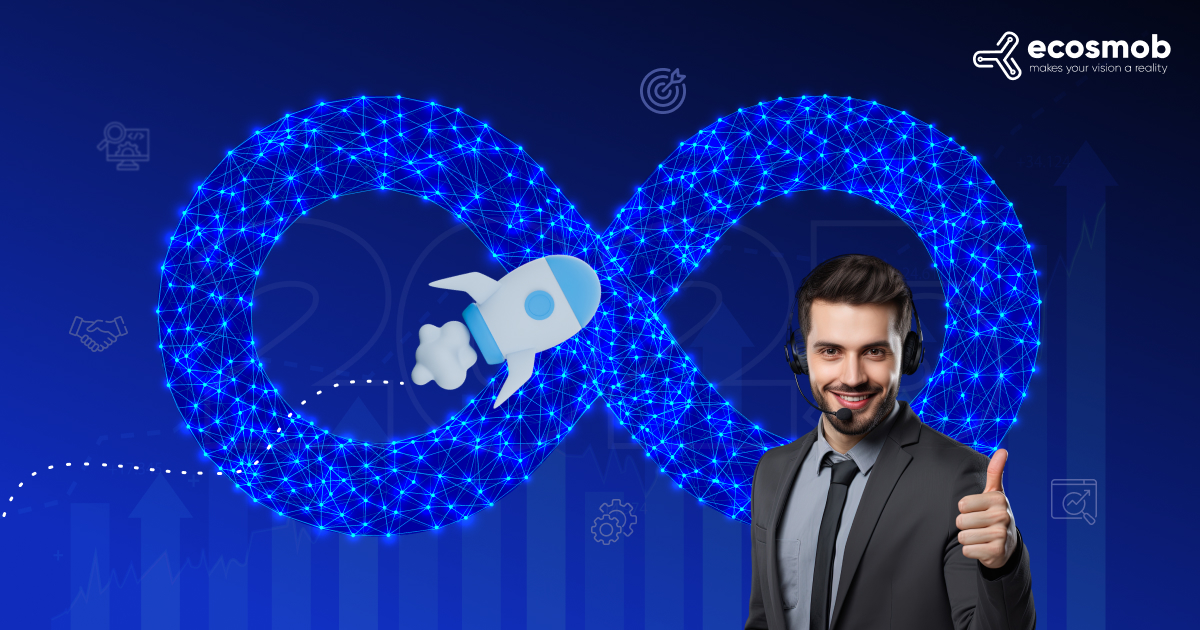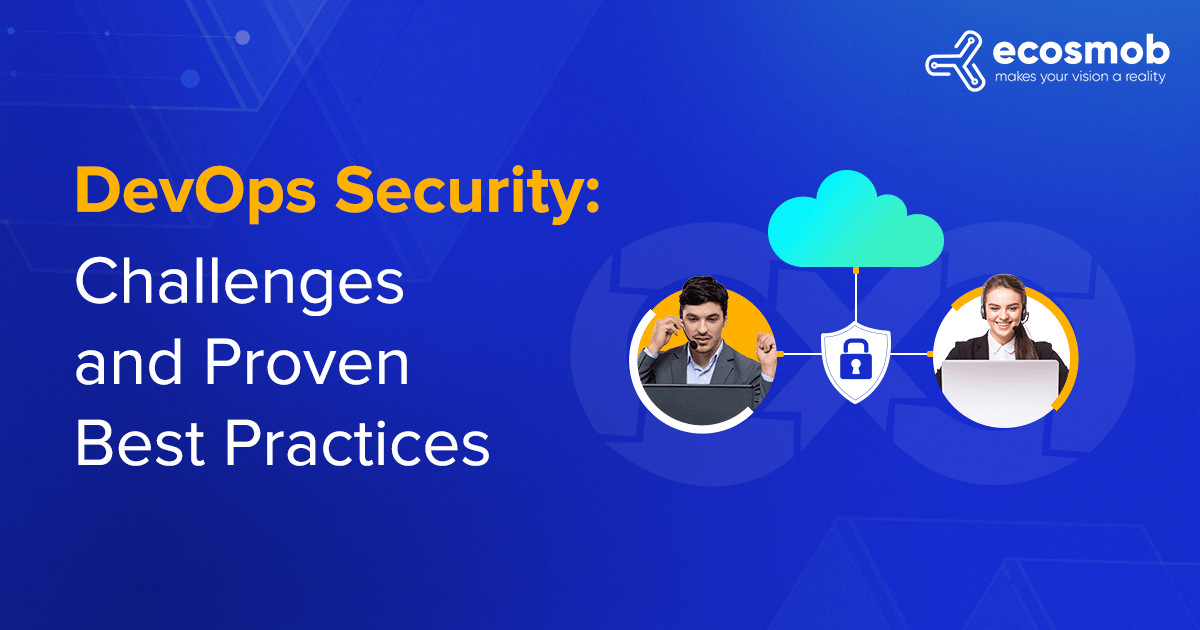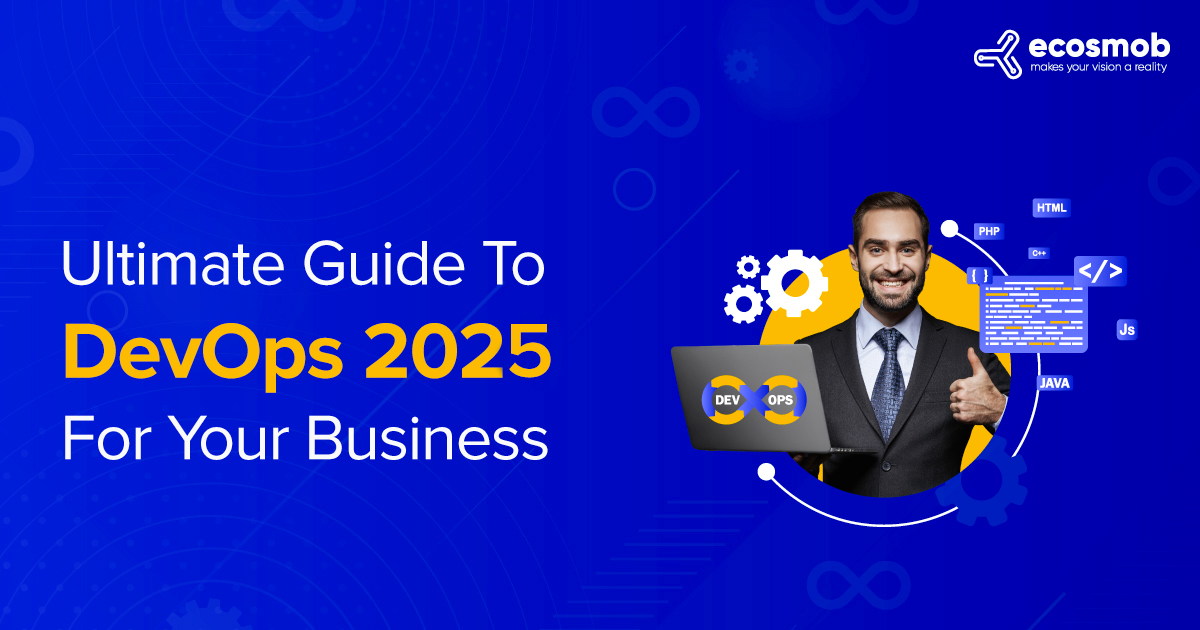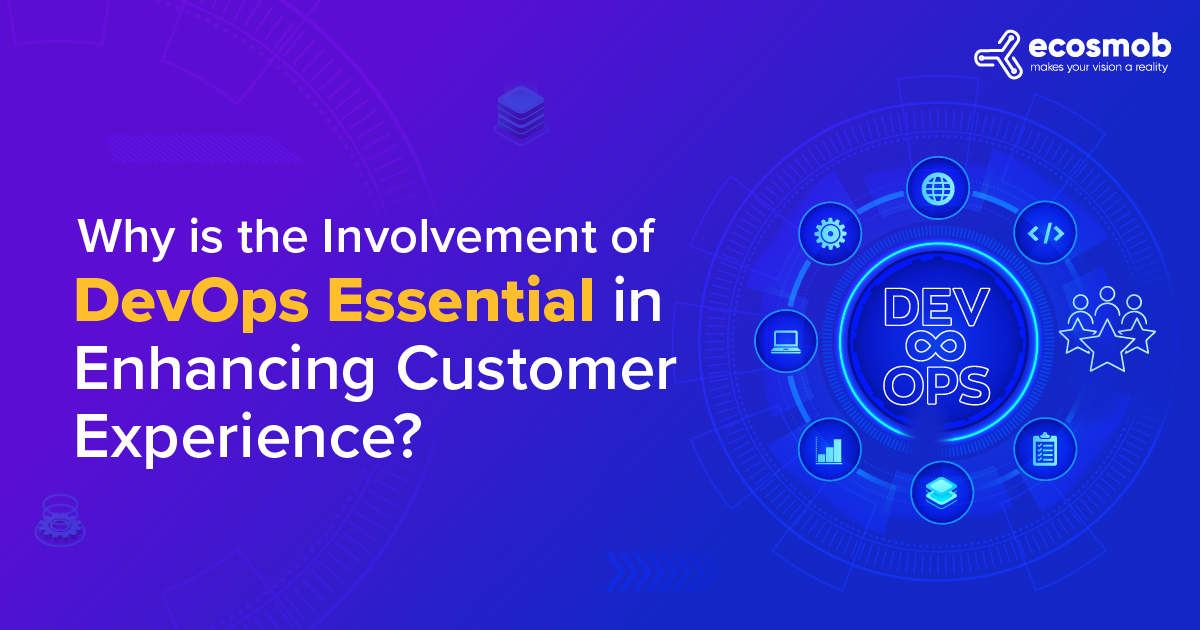QUICK SUMMARY
The following blog breaks down the DevOps lifecycle, explaining its definition, essential phases, and key components in a clear and engaging way. Whether you’re new to DevOps or looking to refine your workflow, this guide covers everything you need to know!
“DevOps isn’t just a process – it’s a mindset shift.”
But if you’re new to it, understanding the DevOps lifecycle can feel like trying to solve a puzzle with missing pieces. It has evolved from a trendy buzzword to a game-changing methodology embraced by businesses of all sizes. Yet, many still struggle to grasp its key components, lifecycle stages, and best practices for seamless implementation.
That’s where DevOps Solutions steps in. This blog post unpacks the DevOps lifecycle, breaking down each phase and how it drives efficiency. Whether you’re just getting started or refining your knowledge, this Ecosmob guide will give you a clear, actionable understanding of how DevOps works and why it matters.
Let’s get started!
Discover the Full Potential of DevOps for Your Organization.
What is The DevOps Lifecycle?
The DevOps cycle isn’t just a process – it’s a continuous loop of development, integration, testing, deployment, and monitoring that keeps software evolving. But to truly unlock the power of DevOps, you need a well-structured DevOps lifecycle that ensures every phase runs smoothly.
From planning and building to deploying and monitoring, every stage plays a crucial role in keeping software scalable, agile, and ready for innovation. DevOps isn’t just about tools – it’s a mindset of continuous learning, experimentation, and feedback that helps teams refine products, processes, and even DevOps consulting services. But here’s the catch: executing it effectively requires a deep understanding of each stage in the DevOps development lifecycle – and that’s exactly what we’re here to break down.
The core idea of continuous improvement (Kaizen) in DevOps traces back to Toyota’s lean manufacturing system, which emphasized automation, collaboration, and eliminating inefficiencies.
Developers must understand DevOps to produce faster results. The development process may become more accessible and convenient if they are.
What are the Different DevOps Phases of Development Lifecycle?
The DevOps lifecycle isn’t a one-and-done process – it’s a continuous cycle where every stage feeds into the next, ensuring constant improvement and efficiency. Let’s break down each phase and how it contributes to seamless development and deployment.
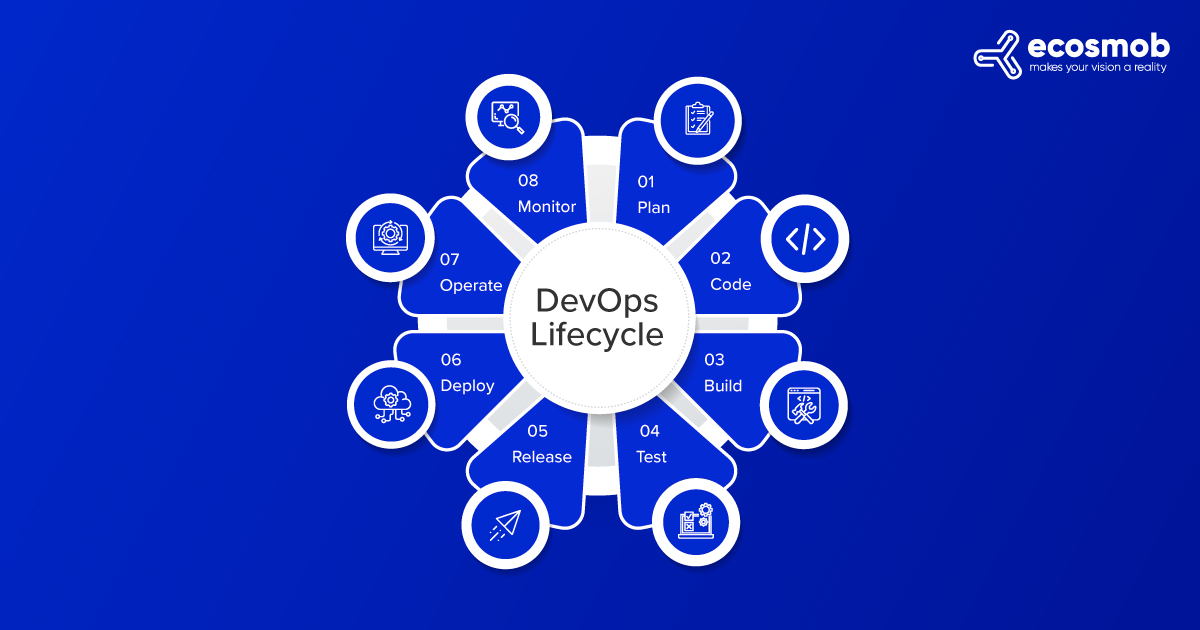
Plan: Setting the Foundation
Great software starts with great planning. Unlike traditional development models, DevOps embraces an iterative approach, meaning every cycle builds on the insights from previous versions. This phase involves all teams—developers, operations, security, and QA—ensuring that every aspect is accounted for. The goal? To create a roadmap that keeps scalability, agility, and innovation at its core.
Code: Writing with Purpose
Here, developers get to work, writing and preparing code based on the requirements outlined in the planning phase. The code must align with project objectives and adhere to best practices. In DevOps, coding isn’t just about functionality—it’s about collaboration, consistency, and ensuring smooth integration into the next steps.
Build: Bringing It All Together
Once the code is ready, it’s time to integrate it into the project. This stage often involves version control systems like GitHub to manage updates, review code changes, and merge contributions seamlessly. Whether adding new features or fixing bugs, the goal is to ensure that the latest changes fit perfectly into the existing system.
Test: Ensuring Reliability
Testing isn’t just about spotting errors – it’s about guaranteeing stability. Automated and manual tests are run to check for functionality, security, and performance issues. Teams also look for edge cases (rare but possible scenarios) and corner cases (combinations of unusual conditions) to catch potential problems before deployment.
Release: Preparing for Deployment
Once testing confirms that everything works as expected, the release phase kicks in. A final review ensures the software meets quality and security standards before moving to deployment. This step minimizes the risk of last-minute issues, making sure the software is production-ready.
Deploy: Taking It Live
This is where the magic happens—the application is deployed to a live production environment. Deployment can involve setting up infrastructure, configuring databases, and implementing security measures. In DevOps, automation tools help streamline this process, reducing errors and downtime.
Operate: Keeping It Running Smoothly
Now that the software is live, it needs to be maintained. This phase focuses on monitoring performance, troubleshooting issues, and applying patches or updates. A well-managed operations phase ensures that users experience minimal disruptions and that the system remains reliable.
Monitor: Learning and Improving
The cycle doesn’t end at deployment. In DevOps, feedback is crucial. Monitoring tools track user behavior, system performance, and security vulnerabilities, feeding valuable insights into the next development iteration. This continuous feedback loop helps teams refine the product, optimize processes, and enhance future releases.
A Continuous, Evolving Process
The DevOps lifecycle isn’t just a sequence of steps – it’s a culture of constant learning, adaptation, and improvement. By integrating these phases seamlessly, teams can build software that’s not only high-quality but also scalable and secure.
DevOps Life cycle – 7 Cs of DevOps
The DevOps lifecycle phases engages the organization in continuous development and optimizes development processes from beginning to end, leading to quicker delivery times. The seven stages that comprise the majority of this process are as follows.
- Continuous Development
- Continuous Integration
- Continuous testing
- Continuous Deployment
- Continuous Feedback
- Continuous Monitoring
- Continuous Operations
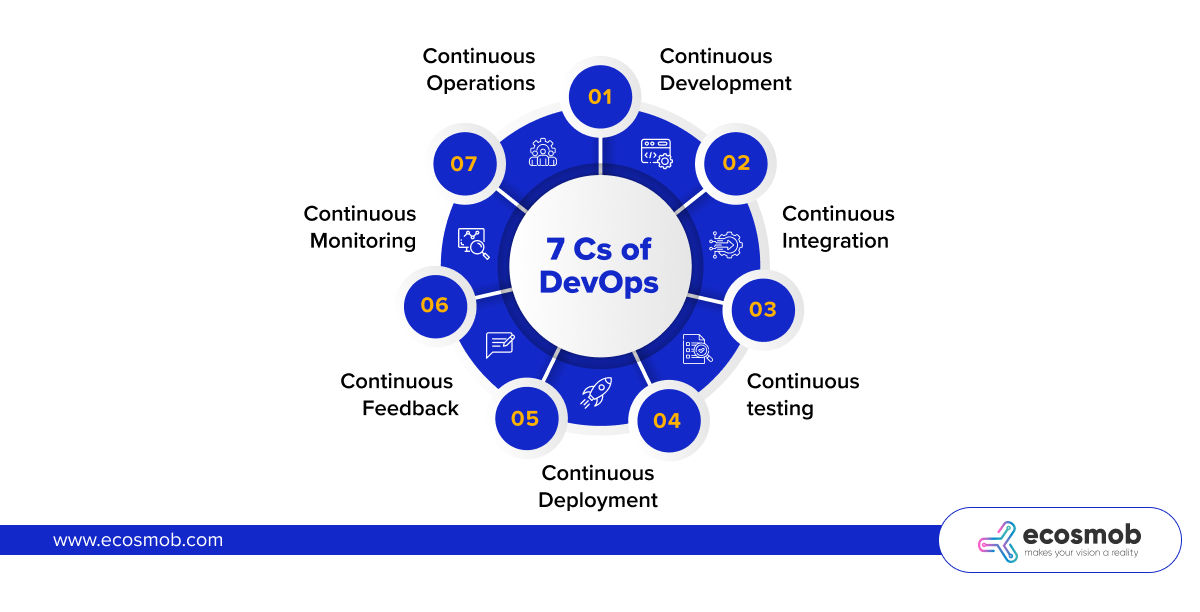
Continuous Development
The program’s continual development is planned and coded. The entire development process divides into smaller development life cycles. This method allows the DevOps team to accelerate the whole software development process. During this phase, the development cycle’s vision lays out, allowing developers to understand project needs appropriately. When everyone has come to an understanding of the business needs, the development team begins building code to achieve those objectives. Developers must keep up with the ongoing coding process if the project’s requirements change or performance problems arise.
Continuous Integration
The DevOps lifecycle’s most significant phase is continuous integration. New functionality and features are created and integrated into the updated code.
In addition, during this stage, errors in the code are discovered and acknowledged, and the source code is changed appropriately. In this phase, integration transforms into an ongoing procedure with code tests before every commit – additionally, the required test schedules during this time frame.
Continuous Testing
While some teams complete the continuous testing step after integration, others do so first. Quality analysts continuously check the software for flaws and problems using Docker containers during this stage.
The code is sent back to the integration phase for revision in case of a fault or an error. Additionally, automation testing minimizes the time and effort needed to obtain reliable results. Teams use Selenium-type technology throughout this phase. Continuous testing also lowers the cost of supplying and maintaining test environments and enhances the test evaluation report.
Continuous Deployment
The finished code is released in the production servers during this crucial and DevOps stages of development lifecycle. Ongoing development uses configuration management to ensure correct and seamless server code deployment. Development teams provide code to servers and plan server updates throughout the production phase, keeping consistent configurations. Tools for containerization enable uniformity throughout the development, testing, production, and staging environments, in addition to easing deployment. This strategy made it possible to continuously release new features for use in production.
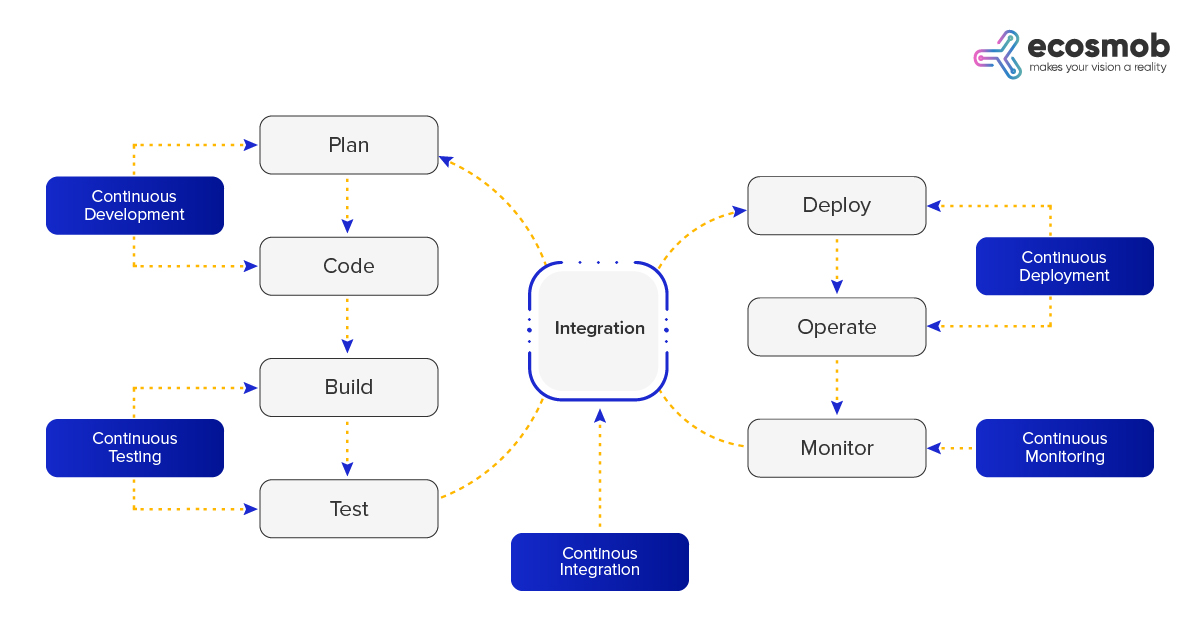
Continuous Feedback
Constant feedback is implemented to assess and boost the application’s source code. In this phase, client behavior is routinely examined for every release to promote future releases and deployments. Companies can collect feedback using structured or unstructured strategies. Underneath the structural method, input is gathered using questionnaires and surveys.
In comparison, feedback received in an unstructured manner is via social media marketing platforms. This phase is essential in making continuous delivery possible to push out a better program version.
Continuous Monitoring
Every operational aspect of the DevOps process is involved in the monitoring phase, where crucial data about how the software is used are meticulously examined to uncover patterns and pinpoint issue areas. It could continuously generate significant data about the application parameters or appear as documentation files. System issues, such as unreachable servers and low RAM, are rectified at this phase. It preserves the security and accessibility of the DevOps for businesses.
Continuous Operations
The final of DevOps stages of Development lifecycle reduces planned maintenance and other downtimes. Updates are frequently performed by developers who have to shut down the server, which prolongs downtime and may be expensive for the company. The ongoing process eventually automates the app’s initial launch and subsequent updates.
The 7Cs of DevOps provide a comprehensive framework for organizations looking to implement DevOps practices. Organizations can achieve faster time-to-market, improved reliability, and reduced risk by focusing on continuous development, integration, testing, deployment, feedback, monitoring, and operations.
Best Practices for DevOps 2025
Implementing best practices that cover the full scope of a project, from cultivating a collaborative culture to adopting the appropriate toolchain, is required if you want to capitalize on the advantages of DevOps fully. DevOps’ best practices for 2023 as mentioned below.
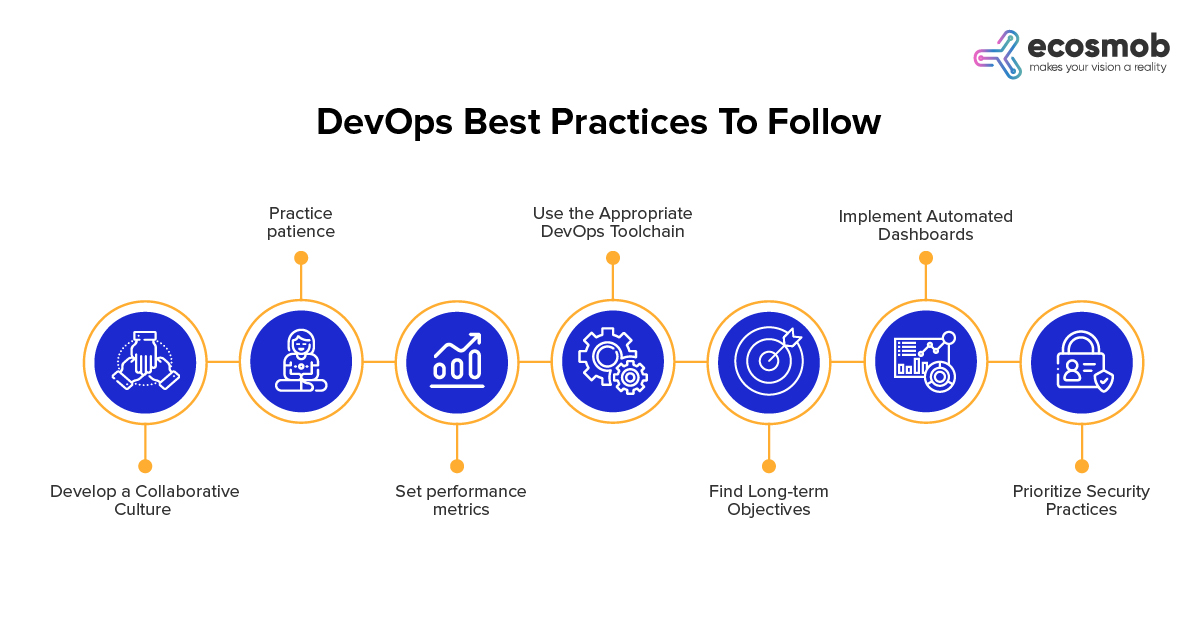
Develop a Collaborative Culture
Organizations must foster a DevOps development lifecycle culture while strongly emphasizing teamwork, collaboration, and the empowerment of each team member across departments. DevOps’s primary goals are moving away from the conventional siloed approach, removing barriers to cooperation, and promoting an inclusive culture.
Practice patience
Implementing DevOps may appear simple, but it’s pretty tricky. Like moving, implementing DevOps lifecycle practices within your organization, and letting go of outdated ideals to embrace new ones.
Set Performance Metrics
Setting goals is a necessary step in the DevOps transformation program; otherwise, there would be no sense in starting the journey. Here, the project teams can collaborate with stakeholders to create performance measures, using the DevOps transformation software development approach to work backward towards attaining those goals.
Metrics can also be used as evidence when you need enough data to explain to senior management how your DevOps transformational efforts are progressing.
Use the Appropriate DevOps Toolchain
A DevOps toolchain is a group of tools that makes it simple for the development and operations teams to collaborate on the development, building, testing, measurement, and deployment of projects. One of your most crucial choices is which DevOps tools to use. Although there are many tools on the market, it’s vital to remember that employing more tools than necessary can complicate your approach and lead to misunderstandings. It makes sense to utilize toolkits that are compatible with your system and are simple to integrate to achieve good configuration management practices.
Find Long-term Objectives
The DevOps development lifecycle is not a magic bullet, which businesses must understand. The company will only benefit from some of its solutions using DevOps. Transformation projects that are bigger and more complex require a lot of time and resources. The firm must also invest a lot of money to complete these projects. Therefore, before hopping on the DevOps bandwagon, firms thinking about it must evaluate their needs.
Implement Automated Dashboards
For engineers, an automated dashboard is a blessing. Automated dashboards can be helpful in this situation. They offer a comprehensive overview of all the finished updates and modifications. These specifics comprise each test’s duration, success, failure rates, overall test completion rate, etc. Automated dashboards also offer a comprehensive overview of all the modifications made.
Prioritize Security Practices
Organizations must be aware of the risks and deploy failsafe protection to protect their software because of the alarming rise in data breaches and security threats. Organizations should adopt automated security monitoring and assurance practices and understand that implementing automatic security controls won’t limit DevOps’ agility.
Organizations should ensure that only trusted users with confirmed credentials have access to the source code of the intellectual property, and test and build scripts shouldn’t contain any credentials on any system.
Summing Up
The most crucial element in the DevOps lifecycle is continuity. Skipping stages will divert attention from the development system. Discontinuity will prevent issues from being found in time, hurting the software’s overall performance. The DevOps methodology design is to improve the productivity of the software. Business organizations must adhere to the DevOps lifecycle’s best practices to succeed and remain innovative.
However, if you are wondering about maintaining the continuity of the DevOps development lifecycle and implementing the best DevOps practices for your business, Ecosmob can be a competent option. Connect with us to comprehensively discuss your business requirements. With 15+ years of experience, our experts would gladly assist you and provide an on-time satisfactory resolution.
Get Ahead of the Competition With Our DevOps Solutions.
FAQs
What is DevOps?
DevOps is a software development approach that combines development (Dev) and operations (Ops) to enable faster, more efficient, and reliable software delivery. It emphasizes automation, collaboration, and continuous improvement.
How does DevOps differ from traditional software development?
Unlike traditional models where development and operations work separately, DevOps integrates them for faster releases, automation, continuous feedback, and collaboration - reducing bottlenecks and improving efficiency.
What is Continuous Integration (CI) and Continuous Deployment (CD)?
1. CI: Automates the process of integrating code changes into a shared repository multiple times a day.
2. CD: Automates software deployment, ensuring every tested update reaches users without manual intervention.
What are the key benefits of DevOps?
Faster software delivery, improved collaboration between teams, higher quality and security, faster issue resolution, scalability, and reliability are some of the key benefits of DevOps.
Why is security important in DevOps?
Security should be integrated from the start rather than after deployment. DevSecOps ensures vulnerabilities are detected early, reducing risks and compliance issues.


